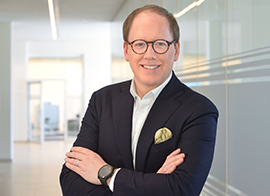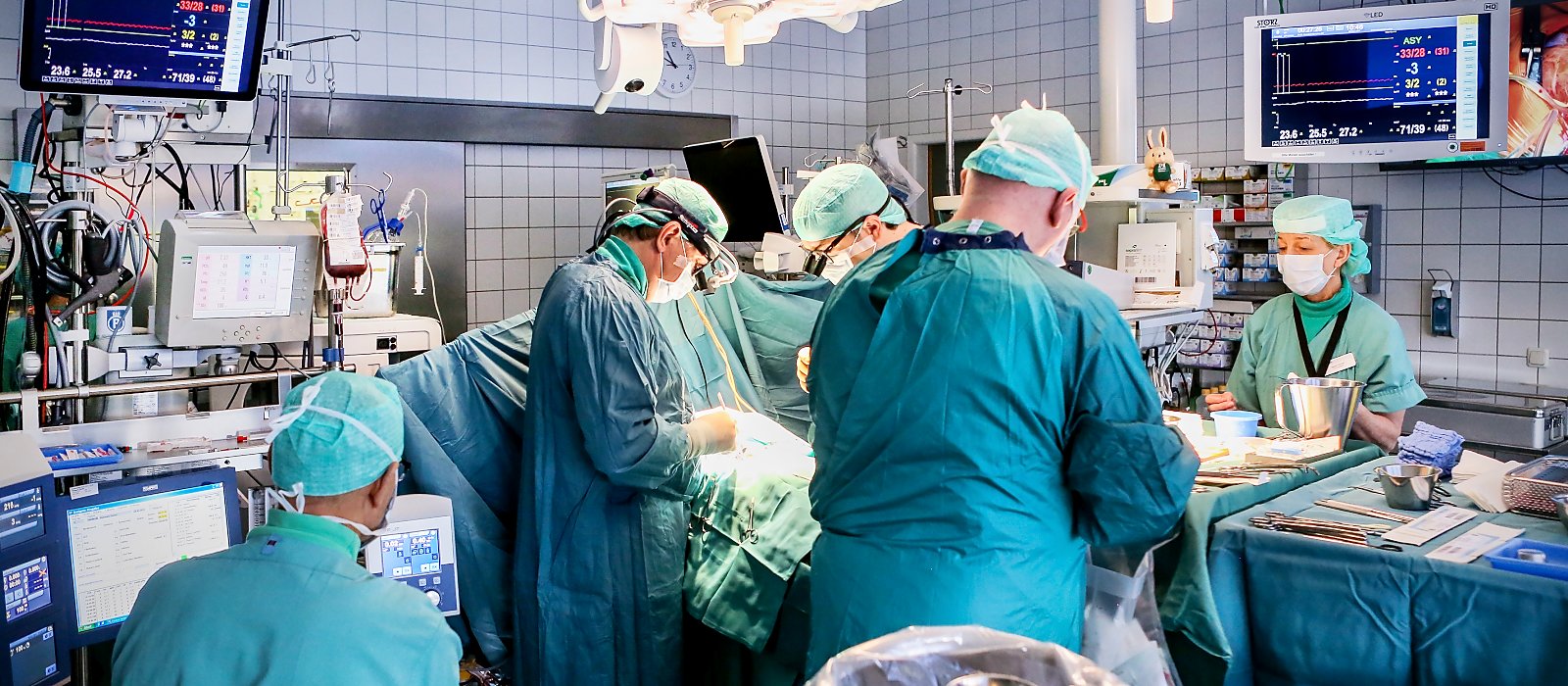
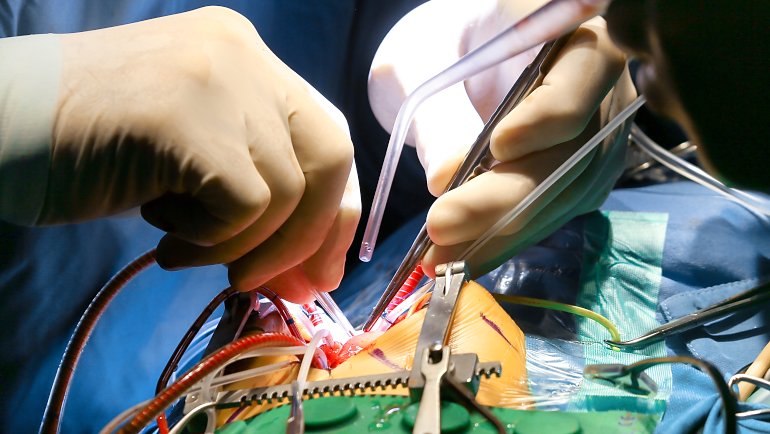
8:30 a.m. In the children's operating room of the Leipzig Heart Center, final preparations are underway. Philipp, just nine days old, is already under anesthesia on the operating table in the middle of the room.
(Published: February 2018)
The regular beeping of the ECG and the lines on a monitor indicate that his heart is working normally, and yet Philipp suffers from a very serious congenital heart defect: His pulmonary artery and aorta are transposed, which causes the blood and pulmonary circulation to run in parallel instead of in sequence, as they should. The baby’s body is barely getting enough oxygen, and only surgery can correct this anatomical defect and save his life.
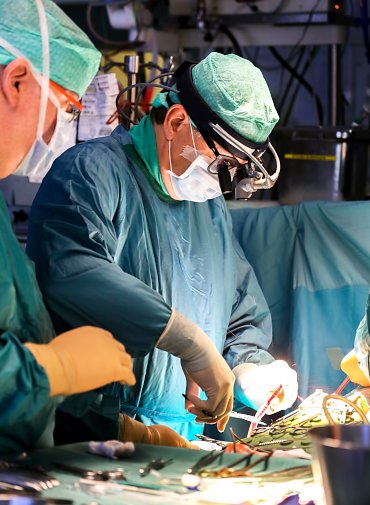
The procedure is challenging, but Philipp is in very good hands. His pediatric cardiac surgeon, Prof. Martin Kostelka, is one of the world’s best. He has performed more than 10,000 operations during his 30-year career, with a 99 percent success rate. The youngest child Prof. Kostelka has operated on was a premature baby born in the 25th week of pregnancy and weighing just 460 grams (a little more than one pound); the oldest “child” was a woman who was 77 when her congenital heart defect was detected.
In an average week, Prof. Kostelka will operate seven times in the children's operating room of the Leipzig Heart Center, assisted by his team of surgical nurses, anesthesiologists, perfusionists, junior doctors and surgical assistants. Among them is Ingrid Conradt, a surgical nurse who has worked at the Leipzig Heart Center for more than 20 years. "We are a very experienced team," she explains. "We can rely on each other 100 percent."
9 a.m. Prof. Kostelka makes an incision in Philipp's chest and opens the rib cage to expose the heart, which is about the size of a walnut. The next step is for the perfusionist to connect a heart-lung machine especially adapted for children. Prof. Kostelka gives brief instructions. Temperature, speed, the flow in the heart-lung machine, pressure … everything must be just right when the machine takes over the work of Philipp's heart to pump blood through his body. Shortly after 10 a.m., with Philipp's heart stopped, Prof. Kostelka's real work begins – the delicate transplanting of tiny coronary arteries and the transposed large vessels so that, when all is done, they will extend from the proper ventricle.
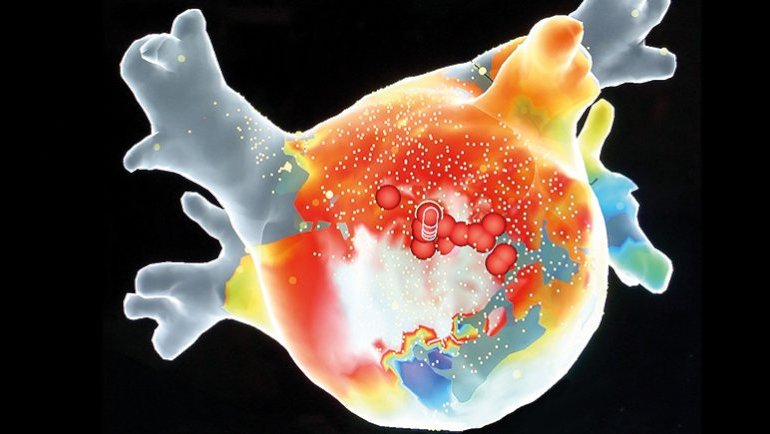
12 noon. While silent concentration dominates the children's operating room, it’s a bit louder two floors down in the electrophysiology (EP) laboratory, where Professor Andreas Bollmann, Chief Physician in the Department of Cardiac Rhythmology, is calling out for 35 watts. "We rhythmology specialists are essentially cardiac electricians," he says with a grin. "We’re able to treat hearts that are beating too fast, too irregularly or too slowly, by using ablations or by fitting defibrillators and pacemakers, which offer a great chance of healing."
Lying before Prof. Bollmann is Guenther K., who suffers from atrial fibrillation, one of the most common cardiac arrhythmias. The doctor threads a catheter with an electrode into the 67-year-old patient's heart via an opening in the groin, which allows the points that are conducting the abnormal stimulus to be gradually neutralized. On a huge screen, he can see not only the lines of the ECG and an X-ray image of the heart but also a bright, almost amoeba-like 3D structure. "That is the left atrium with the pulmonary veins draining into it. With the help of this exact representation, we work out the precise route above the sites to be neutralized," Prof. Bollmann explains. While he guides the catheter, his team stands at what resembles a control center consisting of various monitors and apparatus. They provide the required electrical impulses, according to his instructions, measure parameters, and check imaging.
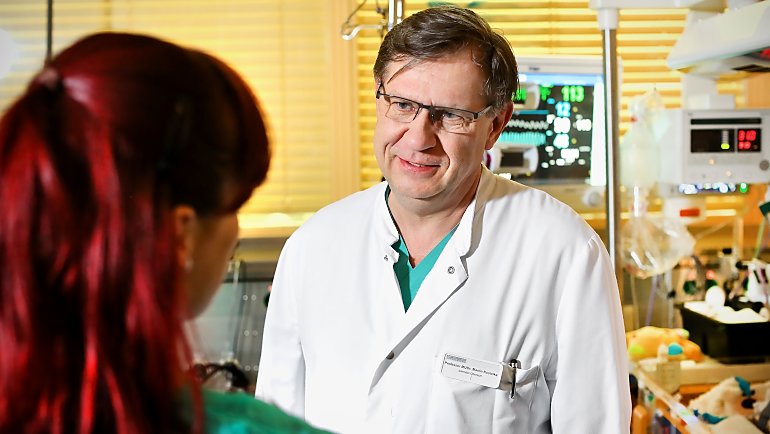
"We not only have the world's largest EP lab here, we also have the most innovative technology and imaging in this field," Prof. Bollmann says. In 2015, Fresenius Helios invested more than €5 million in the Leipzig Heart Center’s EP labs.
But it is not just modernity and innovation that make the heart center in Leipzig, a major city in eastern Germany with a population of 560,000, internationally attractive: Ongoing research in all fields of cardiovascular medicine attracts doctors from all over the world, who receive advanced training here or transfer permanently to the Leipzig Heart Center. In the Department of Cardiac Rhythmology alone there are doctors representing eight nationalities. Overall, people from more than 40 countries work at the Leipzig Heart Center.
5:30 p.m. Back in the pediatric intensive care unit, Philipp has survived the complex surgery. The four hours originally scheduled for the baby’s operation turned into nearly eight, and Prof. Kostelka looks tired, but happy. "Sometimes during an operation, the situation turns out to be much more complex than first assumed,” the surgeon says. “Then you have to deviate from your routine, react and find solutions. That’s how it was with Philipp. Due to an anatomical abnormality of the coronary arteries we had to start again three times, which meant that we also stopped the heart three times. As you can imagine this was a tremendous strain for the little boy.”
“However,” adds Prof. Kostelka, smiling, “we managed it, and now I am really happy and optimistic."
Only three weeks later, Philipp is well enough to leave the hospital with his mother. The infant is doing well, and can now begin to enjoy a healthy life with his family.
Pictures: © Thomas Oberländer, Helios
Contact
Helios Kliniken GmbH
Friedrichstr. 136
10117 Berlin
Germany
T +49 30 521 321-0

